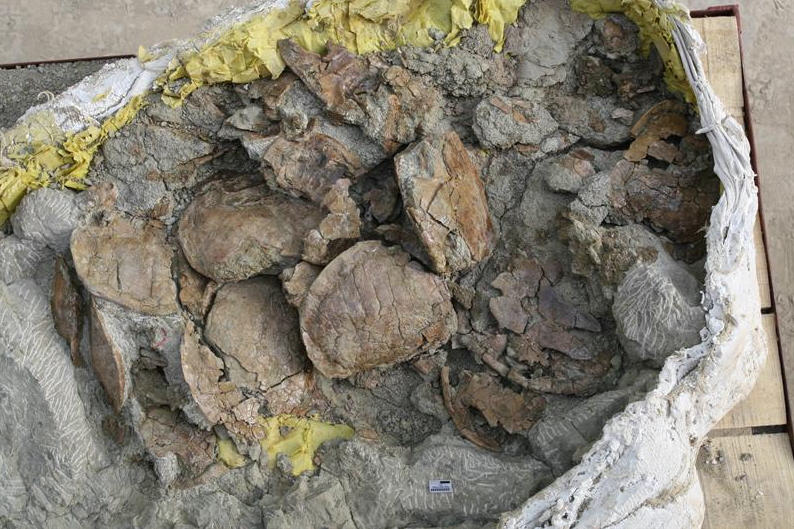Today one of the world’s driest regions, 160 million years ago Xinjiang was a green place of lakes and rivers, bursting with life. Since 2007, researchers have found fossil sharks, crocodiles, mammals and several dinosaur skeletons.
The turtles had gathered in one of the remaining waterholes during a very dry period, awaiting rain. Today’s turtles in Australia for instance do the same thing. But for the Xinjiang turtles, the rain came too late. Many of the turtles were already dead and their bodies rotting. When the water arrived, it came with a vengeance: a river of mud, washing the turtles and sediments along with it and dumping them in one place, as the paleontologists read the site and its layers of stone.
The large number of turtles allows the researchers to make a first statistical analysis of Asian turtles in the Jurassic period. Their simultaneous death and preservation makes it possible to compare variability, growth, and morphological differences among the species. The scientists are looking for sponsors to support further field studies and research into the dinosaur finds.

Block of turtle layer during preparation. Credit: Universitaet Tübingen
“Bones upon bones, we couldn’t believe our eyes,” says Oliver Wings, paleontologist and guest researcher at the Museum für Naturkunde in Berlin. Wings and the University of Tübingen’s fossil turtle specialist, Dr. Walter Joyce, have been working with Chinese paleontologists there since 2008.
“This site has probably more than doubled the known number of individual turtles from the Jurassic,” says Walter Joyce. “Some of the shells were stacked up on top of one another in the rock.” It is what paleontologists call a “bone bed” – in this case consisting only of turtle remains.
Published in Naturwissenschaften





Comments